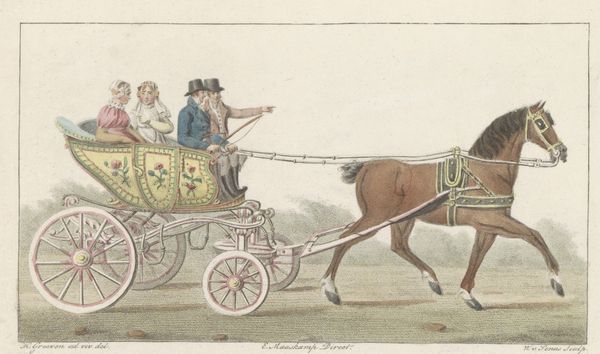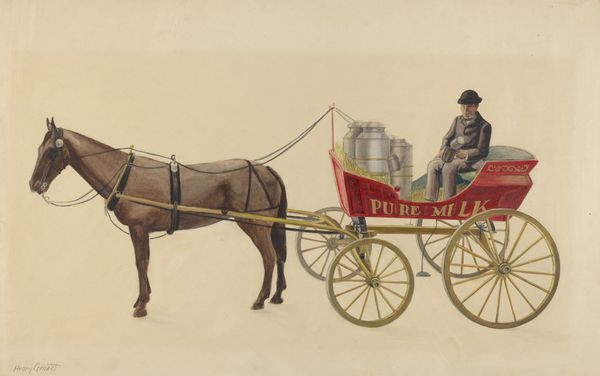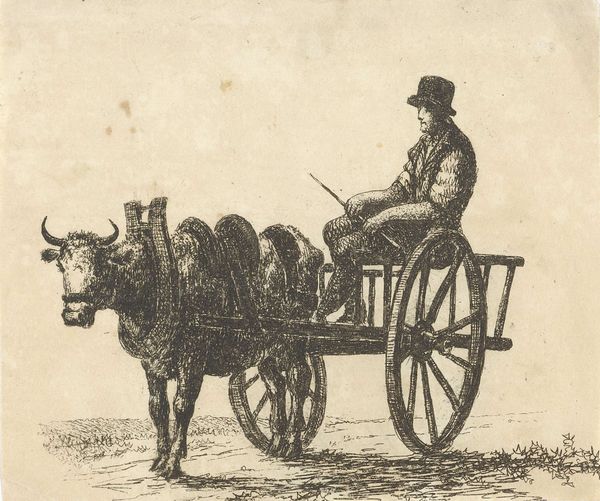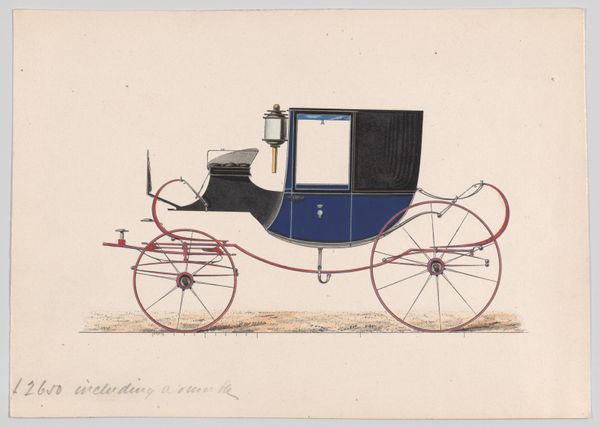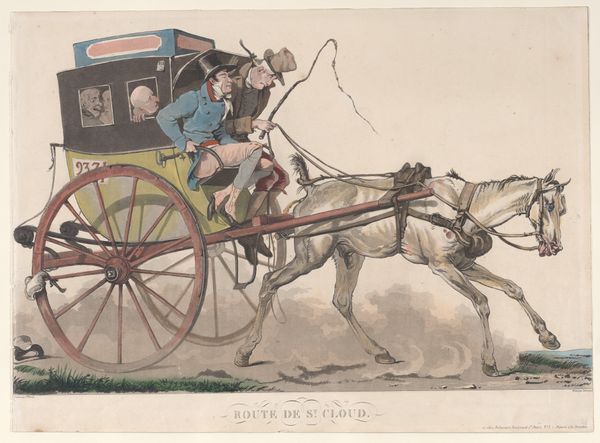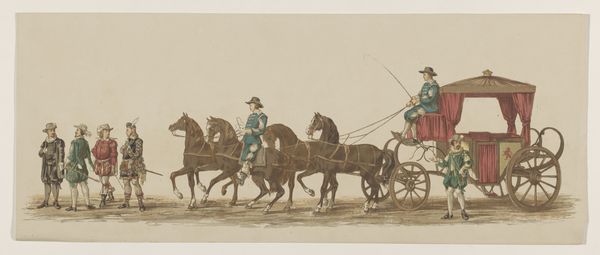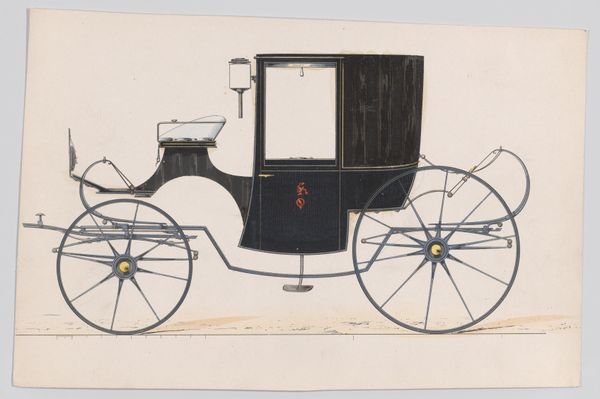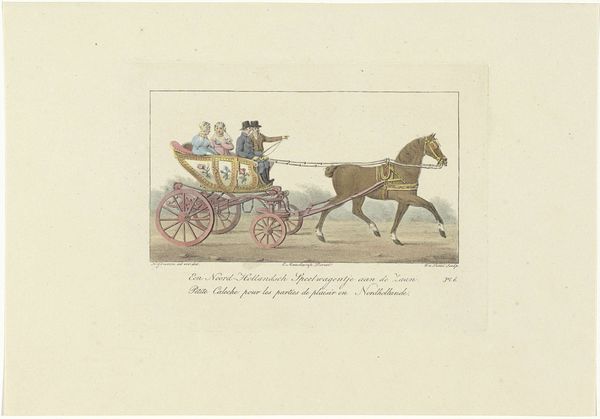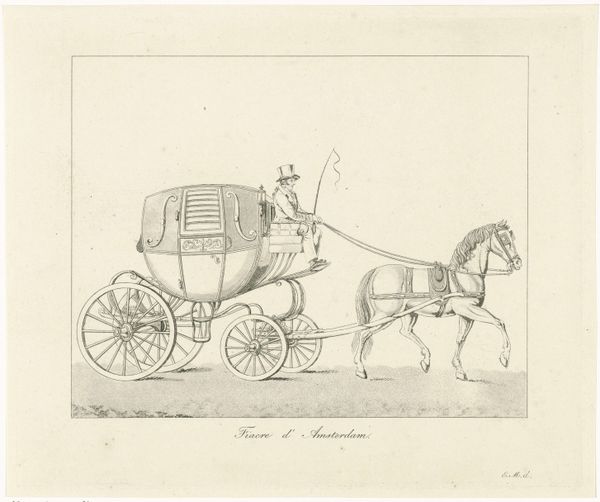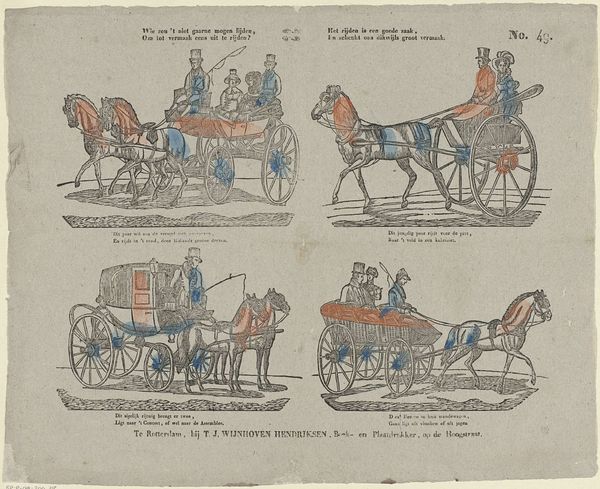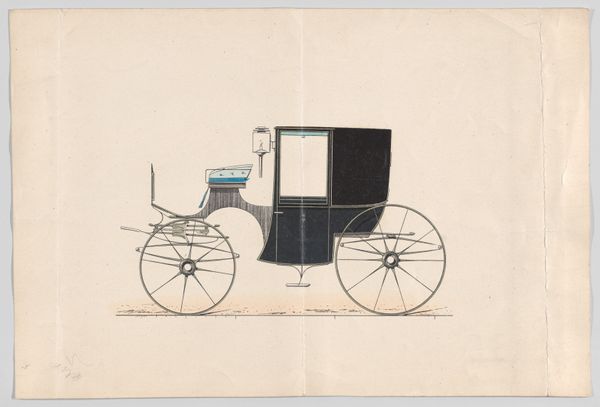
drawing, watercolor
#
drawing
#
landscape
#
watercolor
#
romanticism
#
cityscape
#
watercolour illustration
#
genre-painting
Dimensions: height 187 mm, width 228 mm
Copyright: Rijks Museum: Open Domain
Editor: This is "Paardenkoets in Amsterdam," a watercolor drawing from around 1825 by Roelof van der Meulen. The delicate lines and pale colors give it a really charming feel, but it strikes me as an illustration more than fine art. What's your take? Curator: As a materialist, I find this piece rich with information about production and consumption in 19th-century Amsterdam. Look at the detail in the carriage—the paint, the upholstery, the metalwork. This wasn't just art; it was advertising the lifestyle, the consumption, the very *stuff* of the elite. What materials do you think were locally sourced, and which might have been imported, shaping Amsterdam's economy? Editor: That’s fascinating! I hadn't considered the economic angle. I suppose the wood for the carriage probably came from nearby, but the upholstery, perhaps the dyes for the colors... those could be coming from all over. Curator: Exactly! And consider the labor involved. Who built this carriage? What were their working conditions? Were they independent artisans, or part of a larger manufactory? The image becomes a window into the social structures of the time, not just a pretty picture. Do you think Van der Meulen was intending to portray this broader context? Editor: Probably not consciously, but I see what you mean. Even without intending to, he's captured the materials and production values that tell a much larger story. Thanks! This makes me look at art with new eyes. Curator: Precisely! Every brushstroke represents choices tied to material conditions and human labor. Considering those factors fundamentally alters our understanding of the artwork and its significance.
Comments
No comments
Be the first to comment and join the conversation on the ultimate creative platform.

